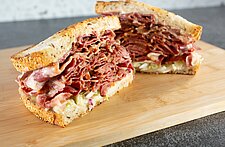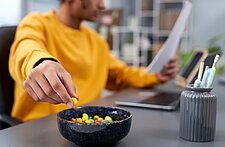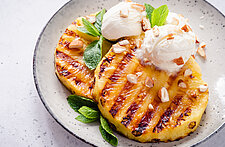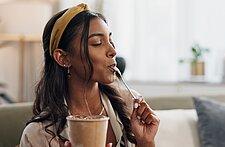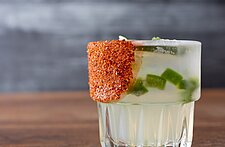Mood-Altering Drinks Are Elevating the Drink Game
For as long as we’ve recorded human history (and probably long before), we’ve turned to fermented grains and produce (i.e., alcohol) as a means of altering the mind. There’s just no denying that people like to enjoy relaxing and letting loose, whether they’re looking to celebrate, socialize, or simply take a departure from the concerns of everyday life.
Some beverages, however, are turning away from the pitfalls of alcohol consumption (intoxication, hangovers, etc.) to focus on altering mood rather than mental and physical faculties. What’s the 411 on mood-altering beverages and the ingredients that make them? Here’s what mixologists and beverage manufacturers alike should be aware of.
Botanicals
Botanicals (or plants and plant parts extracted for flavoring or fragrance) are a common addition to liquor and cocktails of every stripe. Perhaps the best-known use of mood-altering botanicals in drink form is absinthe, a green liquor flavored with anise, fennel, and wormwood with a strong, bitter taste, heavy on the black licorice.
There are plenty of misconceptions about what absinthe can do. For one thing, it isn’t likely to cause hallucinations. However, it is incredibly strong (about 60-70% ABV), and it was used medicinally rather than recreationally until the 1700s. Today, it’s served diluted, typically with a sugar cube and ice-cold water to cut both the intense flavor and alcohol content.
Alcohols like gin and Jägermeister also benefit from the addition of botanicals (primarily juniper and anise, respectively) but don’t tend to offer any added, mood-boosting benefits. In truth, where botanicals are gaining the most traction of late is in non-alcoholic beverages designed to alter the mood without intoxication.
Related: 4 Rising Flavor Trends in Beverage
Natural, Non-Alcoholic Ingredients
If you want an energy boost without caffeine, you might reach for a beverage infused with B-vitamins. The same basic principle can boost mood, and consumer demand for feel-good bevs that won’t cause intoxication is on the rise. All restaurants and beverage brands have to do is scope out the right ingredients and create recipes that incorporate them in tasty and appealing ways
Botanicals are for more than just flavor and aroma. Many also impart a range of health benefits. For example, valerian root has long been valued for its mild, sedative properties. Schisandra, or magnolia berry, gains acclaim for its five-flavor profile (sweet, salty, bitter, pungent, and sour), antioxidants, and potential adaptogenic properties that may reduce stress and promote homeostasis.
Seedlip, billed as “the world’s first distilled non-alcoholic spirit,” contains a blend of natural botanicals, distilled spices, and other ingredients and is designed for use with soda or tonic. In other words, it’s “what to drink when you’re not drinking.” Although its mood-altering properties are somewhat dubious, it solves the dilemma of serving non-drinkers. That said, it may contain trace elements of alcohol totaling less than 0.5% ABV, probably making it a no-go for sober patrons.
Not every mood-altering botanical lends itself well to inclusion in beverages. St. John’s Wort, for example, has long been used as a mood-boosting agent. Still, because of the way it interacts with alcohol and a range of foods and beverages, it’s typically recommended as a supplement on its own.
Euphorics
What the heck are euphorics? This emerging drink category is being spearheaded by Kin, a company founded by Ayurvedic herbologist Jen Batchelor and model Bella Hadid. Its mission is to elevate the senses, find balance, and socialize, sans alcohol.
Euphorics are made with a proprietary blend of botanics and adaptogens (see Schisandra above) that may help manage stress. They also incorporate nootropics (not the prescription variety), otherwise known as cognitive enhancers. Together, these ingredients may lead to states of calm relaxation or euphoric joy, depending on the mix.
Terp-Based Beverages
With hemp cannabis (featuring 0.3% or less THC) being legalized by the 2018 Farm Bill, the market for products has expanded at an alarming rate, and beverages featuring hemp+botanical terpenes (or botanical terpenes alone) are definitely on the menu. It’s an important distinction, though, as many plants have botanical terpenes, which may have some mood-altering effects, but perhaps not as much as hemp.
Drinks will advertise on the label how much hemp content is included (in mg) for easy dosing. On a side note, beverages containing botanical terpenes are not the same as terp juice, which is a concentrate of a terpene-rich resin and not designed for drinking.
Although alcohol can certainly enhance your mood, undesirable side effects like intoxication and hangovers have led plenty of consumers to seek alternatives for relaxation and socialization. Options like botanicals, euphorics, and botanical terpenes are opening exciting new avenues of exploration for consumers and beverage-makers alike.
Looking for more trends in food and beverage? Subscribe to our weekly newsletter HERE


